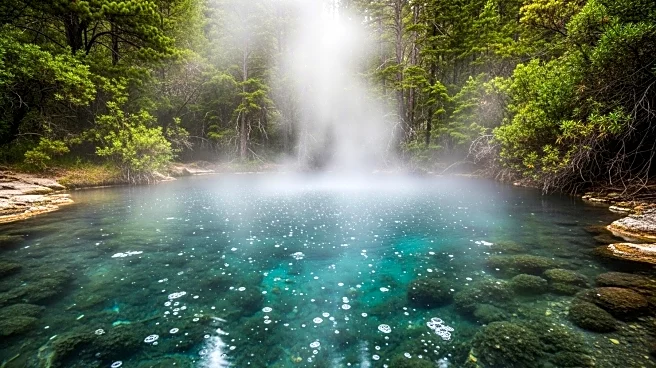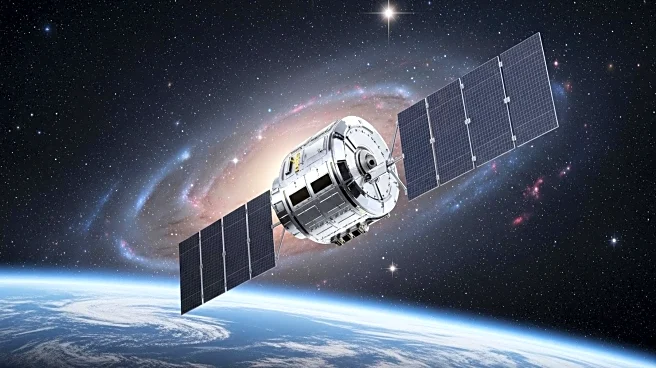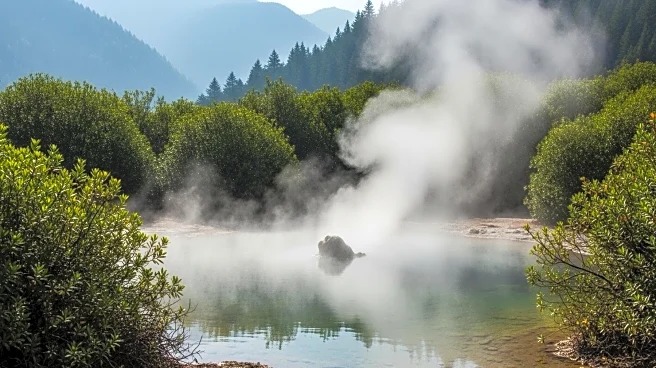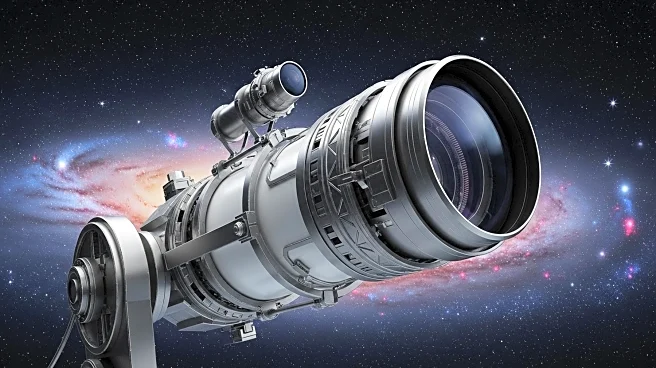What's Happening?
A study led by Fatima Li-Hau and Associate Professor Shawn McGlynn at the Earth-Life Science Institute (ELSI) in Tokyo, Japan, investigates iron-rich hot springs to understand early Earth's ecosystems. These springs mimic the chemistry of ancient oceans during the Great Oxygenation Event (GOE), which occurred around 2.3 billion years ago. The research suggests that early microbial communities used iron and oxygen released by photosynthetic microbes for energy, revealing a transitional ecosystem where life turned a waste product into a new energy source before photosynthesis became dominant. The study involved examining five hot springs in Japan, rich in ferrous iron and low in oxygen, conditions thought to resemble early Earth's oceans. The team found microaerophilic iron-oxidising bacteria to be dominant, alongside Cyanobacteria, which produce oxygen through photosynthesis.
Why It's Important?
This research provides insights into the evolution of life on Earth, particularly during the transition from an anoxic, iron-rich ocean to an oxygenated biosphere. Understanding these early ecosystems can inform the search for life on other planets with similar geochemical conditions. The study highlights the role of iron oxidation and oxygen production in early microbial communities, offering a new perspective on how life adapted to rising oxygen levels. These findings contribute to our understanding of microbial ecosystem functions during a crucial period in Earth's history, potentially guiding future research in astrobiology and the origins of life.
What's Next?
The study opens avenues for further research into the metabolic potentials and community compositions of early Earth's ecosystems. It suggests that similar environments on other planets could host life, prompting investigations into extraterrestrial life forms. The findings may also inspire new studies on the co-evolution of Earth and life, focusing on how ancient microbes adapted to changing atmospheric conditions. Researchers may explore other natural laboratories that mimic early Earth conditions to deepen our understanding of life's evolution.
Beyond the Headlines
The research underscores the importance of interdisciplinary collaboration in addressing complex scientific questions. By studying modern analogue environments, scientists can gain insights into ancient ecosystems, enhancing our understanding of life's resilience and adaptability. The study also highlights the potential for iron-rich environments to support diverse microbial communities, offering clues to the metabolic strategies that may have sustained life during Earth's early history.











